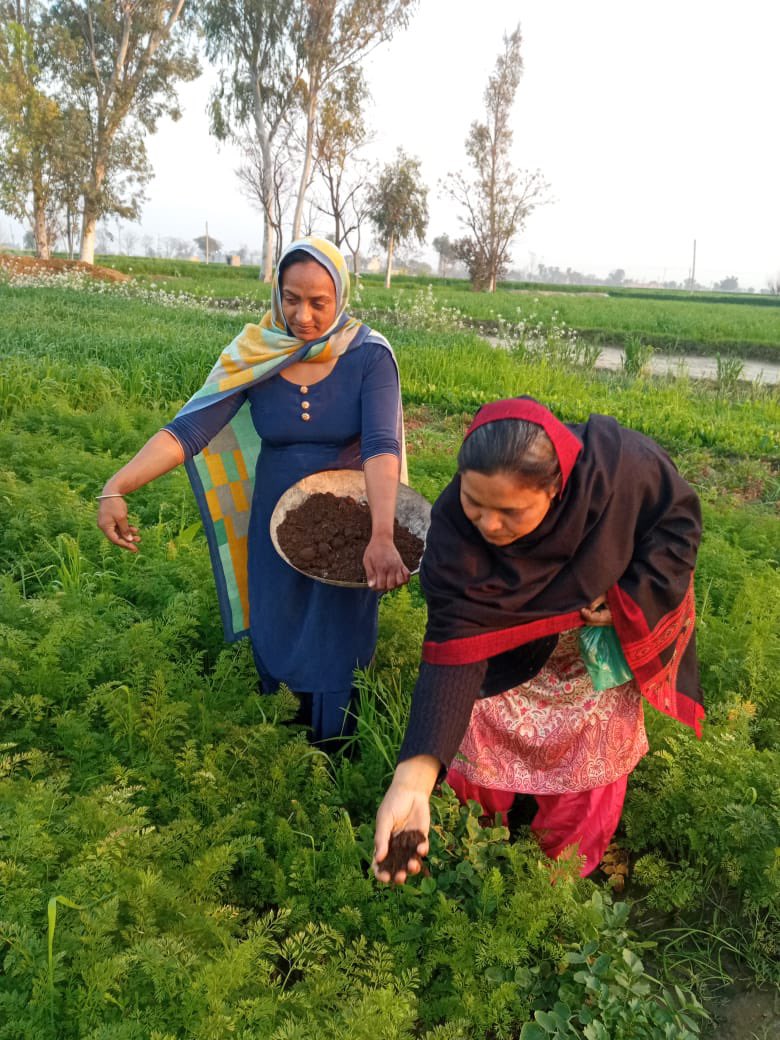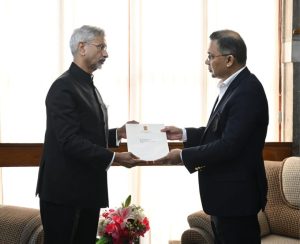De-feminization of Indian agriculture gaining pace

Photo credit Twitter Nandi Foundation
By Pradeep Kumar Panda
Bhubaneswar, April 9: Indian agriculture is clearly too slow to adopt technology and modern tools of farming to break free from the bind of traditional method of cultivation. Seed replacement rate indicates that use of certified quality seed distributed by various agencies is quite low.
Fertiliser use in most of the states is sub-optimal. Still a feeling is emerging against the use of inorganic fertiliser and other chemicals and there is a talk to move to natural farming. On the other hand, use of compost, which is alternative source of plant nutrients is showing a big decline. More than one crop is grown on less than 50 per cent of area under cultivation. Improved technology has not yet reached large number of farmers which is evident from the fact that more than 30 per cent area under cereals is still under traditional varieties.
The main underlying reasons for under development of agriculture are poor extension, missing link with supply chain of quality seed and quality plant propagation material, low availability of institutional credit in many states, low level of investments in agriculture and low level of technology. Supply of low quality and spurious inputs is an important factor for increased cost without adequate gain in productivity.
Thus, besides emphasising the use of modern inputs, there is a need to put in place effective mechanism for monitoring and regulating quality of inputs like seed, fertiliser and agro-chemicals. Efficiency is driven by strong and vibrant R&D by public or private sector.
Public sector R&D in the country is showing a fatigue and suffering from resource constraint, disciplinary fragmentations, and lack of drive and inspiration. Private sector investment in agriculture R&D is also low due to nature of IPR regime in the country.
Consequently, the gap between domestic and global agricultural innovations is rising and many fascinating changes experienced in global agriculture are missing in the country. In the absence of domestic R&D attaining global standard, there is a need to facilitate easy access to our farmers to global technology, high quality seed and germplasm and other knowledge products.
Application of biotechnology in agriculture through genetic breakthrough and genetic enhancement, is playing an important role in shaping future of agriculture. Agri-biotechnology in India has occupied a backseat after the restrictions imposed on field testing and non-release of Bt brinjal in the country.
The countries which have embraced genetically modified and genetically engineered technology are gaining advantage in terms of productivity and cost. Trends in productivity of soybean and maize in India and the countries which have adopted biotech crops present a stark example of competitive advantage gained by the later over India through agri-biotechnology.
India will face very tough competition from biotech crops, which are leading to higher yields and lower average cost, if the country does not upgrade technology in such crops. Traditional theories of economic transformation clearly established that share of agriculture in national income and total employment follows declining trend with the progress of economic development in a country. This has been experienced by most of the countries even in the recent times. This transition has been slow in the case of India, particularly in respect of share of agriculture in the total workforce.
During the 25 years after 1991, share of agriculture in workforce declined to around half in Brazil, China, and Malaysia. Labour share of agriculture in Vietnam declined by about 40 per cent. In the case of India, the decline has been much smaller (one third). This has created serious structural imbalances between sectoral composition of output and employment.
The primary reason for this is the failure of non-agriculture sectors in India to pull and attract labour-force from agriculture. Recent developments in technology like automation, AI, big data, IOT, machine learning are further restricting the capacity of non-agricultural sector to absorb work force from agriculture. This has put renewed focus on agriculture to create gainful employment in post-harvest value addition activities.
Empirical evidence from successive surveys on employment and labour use since 2004-05 reveals significant changes in rural and agriculture workforce which have important implications for agriculture and economy. There is large scale withdrawal by female labour from agriculture (cultivators as well as labourers) which shows de-feminization of agriculture rather than feminization of agriculture.






